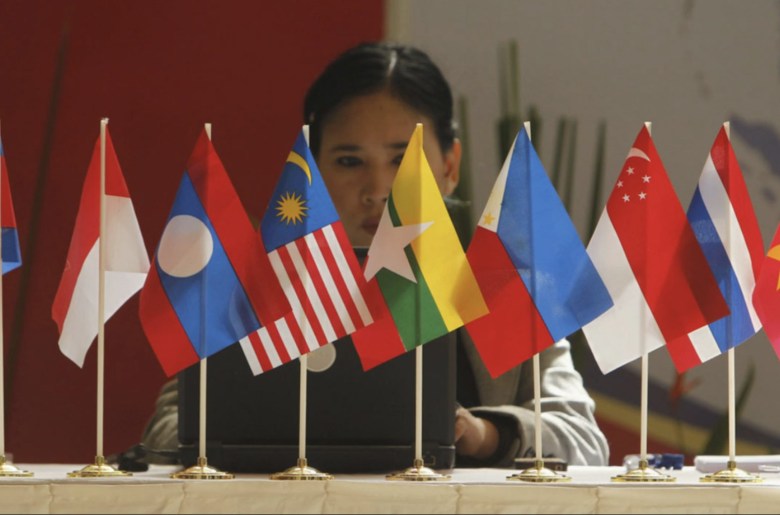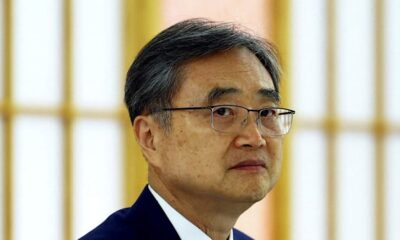Politics
Trump Returns to Southeast Asia for ASEAN Summit Amid Geopolitical Shifts

United States President Donald Trump is set to return to Southeast Asia this weekend for the 47th ASEAN Summit in Kuala Lumpur, Malaysia. This marks his first visit to the region since 2017. Following the ASEAN Summit, Trump will travel to Busan, South Korea, for the APEC Leaders’ Meeting and a highly anticipated meeting with Chinese President Xi Jinping on October 26, 2024. As the current chair of ASEAN, Malaysia’s role highlights the region’s importance as a stabilizing force in a rapidly changing global landscape.
Analysts are already contemplating the potential impact of Trump’s visit, drawing parallels to the “Trump effect” observed during his Gulf Tour earlier this year, which resulted in nearly US$2 trillion in investment and defense deals, reinforcing Washington’s influence in the Middle East. However, the dynamics in the Indo-Pacific differ significantly from those in the Gulf region, where hard power often dictates stability. In contrast, the Indo-Pacific operates through intricate networks of interdependence that connect great, middle, and small powers.
The United States and China serve as the dual anchors of the regional system, with Washington maintaining a strong maritime presence through alliances with countries such as Japan, Australia, and the Philippines. The US is also the region’s largest foreign investor. Conversely, China has emerged as ASEAN’s largest trading partner, leveraging its economic weight through initiatives like the Belt and Road Initiative and various regional supply chains.
Flexible Multilateralism in Southeast Asia
In the context of this competition, it is essential to recognize that rivalry does not solely dictate the Indo-Pacific’s framework. Smaller and middle powers play critical roles as stabilizers, fostering a culture of flexible multilateralism. Southeast Asia has historically been a crossroads of empires and trade, allowing for a diplomatic environment where Trump’s “America First” policy can align with regional interests, especially when competition serves to uphold balance.
During a recent address at the World Economic Forum in Tianjin, Singapore Prime Minister Lawrence Wong emphasized the need for nations to adapt and evolve multilateralism rather than abandon it. He called for the establishment of foundational elements that would allow participation from various stakeholders. This approach is indicative of the region’s strategy, which aims to enhance trade, digital governance, and maritime cooperation, regardless of whether the leadership originates from the US, China, or a collaborative effort.
Frameworks such as the Regional Comprehensive Economic Partnership (RCEP) and the Comprehensive and Progressive Agreement for Trans-Pacific Partnership (CPTPP) reflect this cooperative spirit. New initiatives like the Future of Investment and Trade (FIT) Partnership, launched in 2025, aim to harmonize digital norms and investment facilitation across participating nations.
Moreover, security arrangements, including the ASEAN Defense Ministers’ Meeting-Plus and the Five Power Defense Arrangements (FPDA), are designed to maintain open sea lanes and prevent any single power from dominating the region.
In this evolving landscape, smaller states are active participants rather than mere bystanders. For instance, Singapore’s Digital Economy Agreements with Australia, the UK, and South Korea have inspired the forthcoming ASEAN Digital Economy Framework Agreement (DEFA), which is projected to contribute an additional US$2 trillion to regional GDP by 2030.
The Lao-Thailand-Malaysia-Singapore Power Integration Project, currently transmitting 200 megawatts, serves as a precursor for a comprehensive ASEAN Power Grid, crucial for energy security and the development of future industries, such as AI-driven infrastructure.
Chokepoints of Stability and Agency of Smaller States
While both the US and China control vital chokepoints throughout the Indo-Pacific, the reliance on smaller and middle powers to mitigate vulnerabilities is evident. Geography plays a significant role in this dynamic, offering smaller states leverage. The Strait of Malacca, for example, is pivotal for global trade, handling a record 94,301 ship transits in 2024 and accounting for approximately 80% of China’s oil imports. This reliance has created what analysts refer to as the “Malacca dilemma.”
In response, regional states have taken on proactive roles in addressing these challenges. Singapore’s partnership with China in the Chongqing Connectivity Initiative exemplifies this effort, linking western China directly to Southeast Asia for the first time. Singapore’s investment in Chongqing has surged from US$5.7 billion in 2015 to US$12.7 billion in 2024, enabling faster freight routes that significantly reduce transportation times.
On the other hand, the United States grapples with overextension, as it bears the primary responsibility for securing Indo-Pacific sea lanes across vast distances. In this context, Singapore’s recent military acquisitions, including four P-8A Poseidon maritime patrol aircraft and additional submarines, enhance aerial and underwater coverage of critical sea lines. These efforts are complemented by collaborative maritime security initiatives with Malaysia and Indonesia, aimed at bolstering surveillance in one of the world’s most congested chokepoints.
The transition to a multipolar world underscores the significant role of smaller states in shaping global dynamics. As Prime Minister Wong recently stated, while major powers wield considerable influence, smaller nations have the agency to work collaboratively, ensuring that multilateral frameworks remain viable and effective. This perspective is crucial as the world navigates a complex geopolitical landscape.
When Trump visits the region on Sunday, he will not be expected to dictate terms as the primary architect of the global order. Instead, he will be welcomed as an essential participant in the Indo-Pacific’s multifaceted engagements, recognizing the significance of the “small-state effect” in fostering stability and cooperation.
-

 Lifestyle5 months ago
Lifestyle5 months agoHumanism Camp Engages 250 Youths in Summer Fest 2025
-

 Business5 months ago
Business5 months agoKenvue Dismisses CEO Thibaut Mongon as Strategic Review Advances
-

 Sports5 months ago
Sports5 months agoDe Minaur Triumphs at Washington Open After Thrilling Comeback
-

 Sports5 months ago
Sports5 months agoTupou and Daugunu Join First Nations Squad for Lions Clash
-

 Top Stories5 months ago
Top Stories5 months agoColombian Senator Miguel Uribe Shows Signs of Recovery After Attack
-

 World3 months ago
World3 months agoSouth Korea’s Foreign Minister Cho Hyun to Visit China This Week
-

 World5 months ago
World5 months agoASEAN Gears Up for Historic Joint Meeting of Foreign and Economic Ministers
-

 Health5 months ago
Health5 months agoNew Study Challenges Assumptions About Aging and Inflammation
-

 Business5 months ago
Business5 months agoOil Prices Surge Following New EU Sanctions on Russia
-

 Business3 months ago
Business3 months agoStarling Bank Plans Secondary Share Sale, Targeting $5.4 Billion Valuation
-

 Entertainment5 months ago
Entertainment5 months agoDetaşe-Sabah Violin Ensemble Captivates at Gabala Music Festival
-

 Entertainment5 months ago
Entertainment5 months agoBaku Metro Extends Hours for Justin Timberlake Concert









